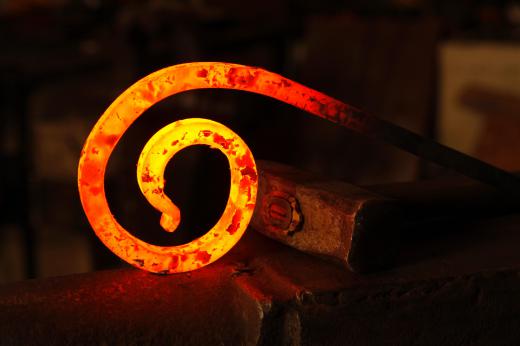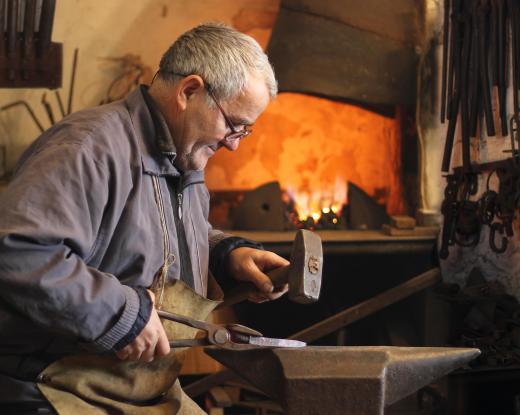Forging is the process of shaping metal by heating it until it is malleable and then bending and otherwise altering it with forging tools. The forge itself is perhaps the most important of all forging tools, but other useful pieces of equipment include the anvil, fuller, chisel, hammer, hardy, tongs, and slack tub. Each tool must be used properly to ensure the best final product, and the blacksmith must be trained on each tool. It is very easy to get burned or otherwise injured working metal, and even when trained, the tools can be difficult to wield safely.
The forge is the location at which the metal is heated. It includes a fire pot and a hearth, both of which will contain heated coal. A tuyere is mounted beneath the fire pot; this pipe allows air to be delivered to the coals, thereby providing a hotter temperature. An air blower is mounted at the other end of the tuyere to provide that airflow. The blacksmith will spend most of his time near the forge, which is exceptionally hot and potentially dangerous. Tongs are perhaps some of the most important forging tools for safety, as the metal cannot be placed in the fire or removed from it by hand, even with the use of fireproof gloves.

Once the tongs have been used to remove a piece from the fire, other forging tools are used to bend and shape the metal. An anvil is a heavy metal device that allows a blacksmith to hammer the metal into different shapes. One end of the anvil is flat, while the other is usually conical or round so the metal being worked can be hammered into curved shapes. This round end is called the horn, and the flat part is called the face. Between the face and the horn may be a feature known as a step, which is essentially a smaller face set slightly down from the face. The hammer itself is also metal, and it is usually quite heavy.

A slack tub is a large tub of water or other liquid used to rapidly cool the metal. This hardens the piece and adds strength to it. Before the metal is cooled, other forging tools will be used to produce the final shape: a chisel or hardy is used for cutting hot metal and a fuller is used to make grooves.
